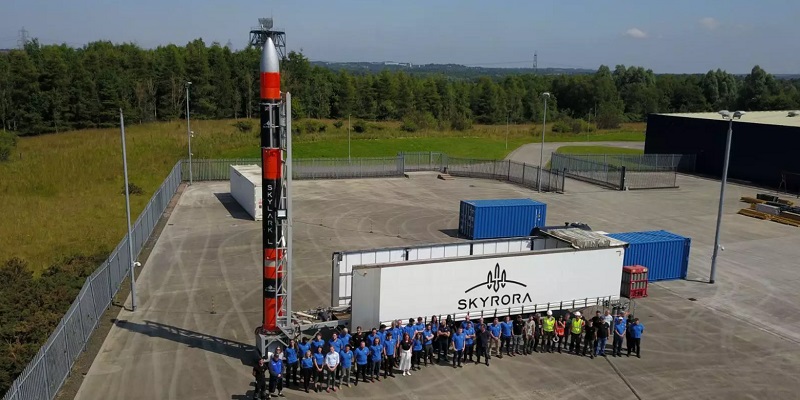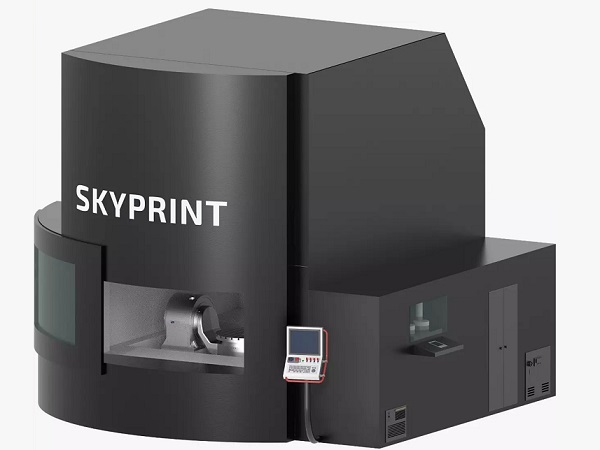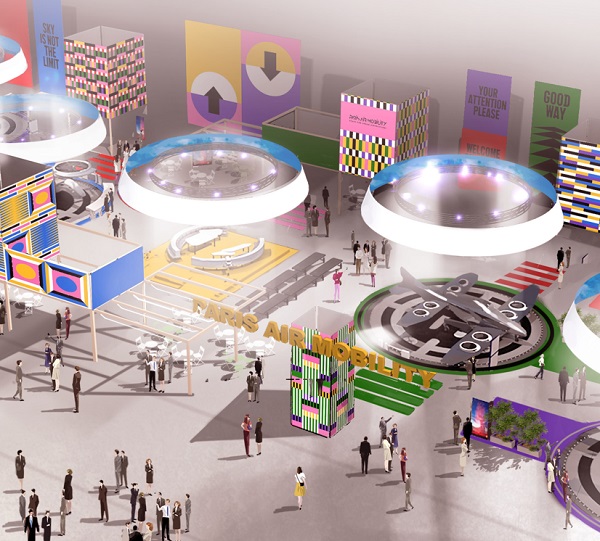Skyrora’s Latest 3D-printed Engine Aims to Power First UK-based Orbital Launch
Skyrora has 3D-printed and begun testing its latest 70 kN engine design, which will be a key component of the first and second phases of Skyrora’s XL orbital vehicle.
UK-based space company, Skyrora, announced its plans to commence uninterrupted testing of an updated design of its 3D-printed 70 kilonewton (kN) engine. The engine must be extensively tested and evaluated to qualify it for its debut commercial launch. Skyrora has both developed and used the largest 3D printer available in Europe, the Skyprint 2 machine, to print the updated engine for the first time.

Skyrora is reaching for the stars, commencing testing of the latest iteration of its 3D-printed 70 kN orbital engine. Image used courtesy of Skyrora
Updated Engine Design
The design of the updated engine features an improved cooling chamber which is meant to extend the engine’s lifespan by making the cooling process more efficient. Compared to previous iterations of the 70 kN engine, the latest version is designed in such a way as to reduce costs by 20 percent and speed up production time by about 66 percent. The company used its additive manufacturing (AM) expertise and support from the European Space Agency’s (ESA’s) Commercial Space Transportation Services and Support program, Boost!, to develop the latest engine design.
The revised 70 kN engine will qualify as the first commercial engine to use a closed-cycle staged combustion system powered by a propellant mixture of hydrogen peroxide and kerosene following certification. The closed-cycle staged combustion system is intended to increase the effectiveness and performance of space launch vehicles. Utilizing a two-phase combustion process, this method produces more complete combustion and superior thrust. The higher specific impulse produced by this design will boost the engine's overall efficiency.
Rocket Engine Testing
Skyrora’s 120,000-square-foot testing site in Midlothian, Scotland, is the largest of its kind to be found on UK soil. The updated 70 kN engine will be run for 250 seconds—the amount of time it would take for a rocket to reach orbit in a real-world scenario—while full operational envelope and life cycle testing are conducted.

A depiction of Skyrora’s Skyprint 2. Image used courtesy of Skyrora
Normal chamber pressures and thrust levels without any hardware damage will signify a successful test. In around three weeks, another test cycle (including data analysis, design changes, and manufacturing) can be finished.
To validate the machine, materials, and machining procedure for Skyprint 2, Skyrora is collaborating with the National Manufacturing Institute of Scotland. These requirements will make Skyprint 2 commercially available for other businesses, expanding Skyrora's commercial offerings in the emerging space sector.
Skyrora’s XL Orbital Vehicle
The improved engine from Skyrora will play a crucial role in both the XL orbital vehicle's first and second phases. Payloads of up to 315 kg can be launched into orbit using the three-stage orbital launch vehicle. Its height is roughly 23 meters, and its liftoff mass is roughly 56 metric tonnes.
Upon qualification of the updated engines, Skyrora plans to produce a series of engines to test the final stage of the Skyrora XL.
Developments in Aerospace Tech
At the Paris Air Show, CRP Technology will display flight-ready 3D composite parts for the aerospace sector. The business's Windform composite materials, which were first created for motorsports, have found uses in space missions. The retaining ring, stator, and TuPOD are just a few examples of prototypes on display that have been employed for different space missions. The materials produced by CRP help small satellites, including mini- and pico-satellites, and aerospace components advance. Notably, the TuPOD, a 3U CubeSat and a dispensing system-based satellite deployer (which was also 3D-printed) was the first of its sort to be deployed from the International Space Station in late 2017.

CRP Technology, Avio S.p.A, and Velo3D are among some of the companies facilitating the growth of the space industry through 3D printing. Image used courtesy of the SIAE
The research and production of Avio S.p.A.'s space propulsion systems will be aided by the acquisition of two metal AM systems from Velo3D. An original Sapphire system and a Sapphire XC 1MZ 3D printer are included in the transaction, which was presented at the Paris Air Show. The machines are calibrated to produce nickel-based alloy parts with exceptional durability and corrosion resistance, even in very hot environments. The capacity of Velo3D's printers to create substantial metal components with ideal geometry led to their selection. Avio's partnership with Velo3D demonstrates its dedication to developing innovative propulsion solutions while also facilitating the evolution of the space sector.

 Facebook
Facebook Google
Google GitHub
GitHub Linkedin
Linkedin








